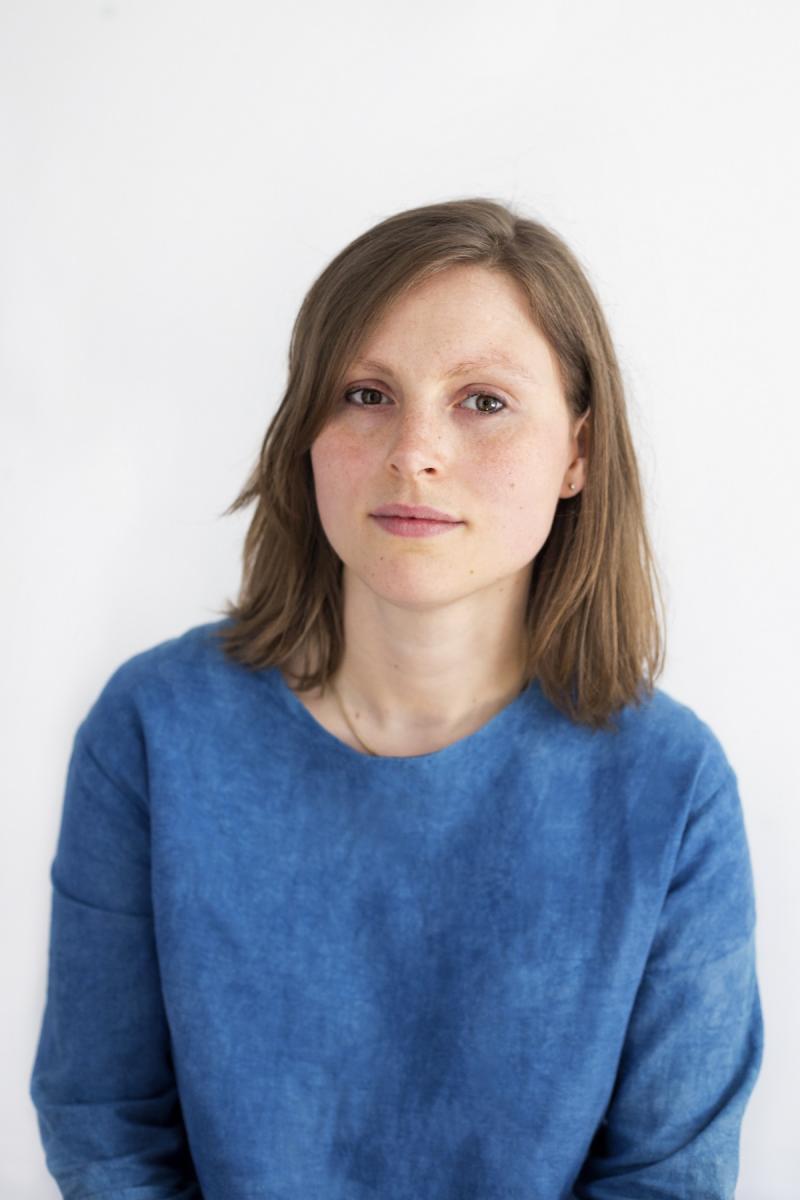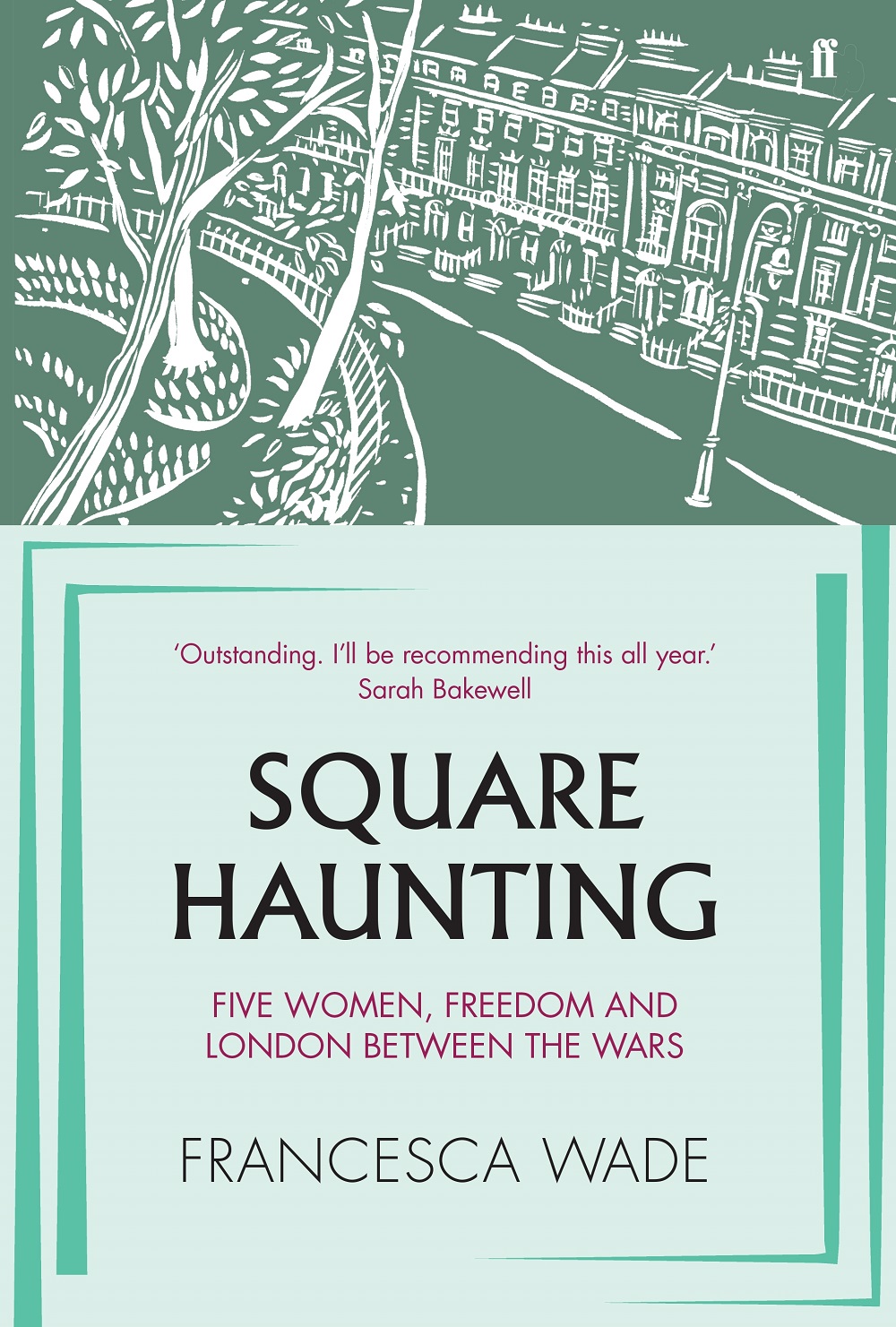Francesca Wade: Square Haunting - Bloomsbury retold | reviews, news & interviews
Francesca Wade: Square Haunting - Bloomsbury retold
Francesca Wade: Square Haunting - Bloomsbury retold
The stories of five women in Bloomsbury recover lost layers in London's palimpsest

These days, Bloomsbury rests in a state of elegant somnolence. The ghosts of Virginia Woolf and Vanessa Bell linger on in the shabby gentility of Russell Square and its environs, the bookish institutions that are the bones of the place conferring tranquility, despite the many students and tourists.
Francesca Wade’s account of five women who lived and worked here between the wars reminds us that for women seeking independence through intellectual and creative endeavour, the haven provided by this singular London pocket was essential. Bloomsbury’s liberal environment made life not just tolerable, but viable. Free of charge and open to all, the British Museum Reading Room was a world apart from the anonymous Cambridge college cited in A Room of One’s Own, where Virginia Woolf is reminded that “ladies are only admitted to the library if accompanied by a Fellow of the College or furnished with a letter of introduction.” Woolf’s essay was delivered as a lecture in 1928; in 1878 University College London – “that Godless institution in Gower Street” – became the first British university to accept women, while the Slade, its famously radical art school, was the first to admit men and women on equal terms.
 That its institutions were more willing than most to open their doors to women was crucial, but Wade argues that Bloomsbury’s plentiful supply of affordable rooms was just as important. Through a curious quirk of fate, the modernist poet Hilda Doolittle (known as H.D.), Virginia Woolf, Dorothy L. Sayers, the classicist and translator Jane Harrison, and the historian, broadcaster and pacifist Eileen Power all lived at Mecklenburgh Square, a somewhat overlooked address between Coram’s Fields and Gray’s Inn Road, at different points between 1916 and 1941. This historical peculiarity is a gift to Wade’s rangy narrative, providing a satisfyingly neat locus for events that span a period of 25 years or more, and involving protagonists who, the author emphasises, were “not a Bloomsbury Group”.
That its institutions were more willing than most to open their doors to women was crucial, but Wade argues that Bloomsbury’s plentiful supply of affordable rooms was just as important. Through a curious quirk of fate, the modernist poet Hilda Doolittle (known as H.D.), Virginia Woolf, Dorothy L. Sayers, the classicist and translator Jane Harrison, and the historian, broadcaster and pacifist Eileen Power all lived at Mecklenburgh Square, a somewhat overlooked address between Coram’s Fields and Gray’s Inn Road, at different points between 1916 and 1941. This historical peculiarity is a gift to Wade’s rangy narrative, providing a satisfyingly neat locus for events that span a period of 25 years or more, and involving protagonists who, the author emphasises, were “not a Bloomsbury Group”.
As such, Mecklenburgh Square acquires symbolic weight as the focus for pivotal moments in the lives of five women in the vanguard of 20th century British intellectual life. Woolf called Mecklenburgh Square home for the last year of her life: it was a year of extremes, and by October 1940 her flat at number 37 would be left uninhabitable, her old home at Tavistock Square reduced to rubble. Still, writes Wade, the year that lead up to her suicide was astonishingly productive, “full of activity, friendships new and old, projects and plans”.
For Woolf, Bloomsbury would always be synonymous with freedom: it was to Gordon Square that she and her siblings had moved to pursue a new, unconventional life away from the staid formality of her childhood home in Kensington. In an echo of Woolf’s move to Bloomsbury in 1904, H.D. and Dorothy L. Sayers were each at the very beginning of their careers when, in the aftermath of the First World War they found lodgings at Mecklenburgh Square – by another curious coincidence Sayers moved into the room vacated by H.D. in 1918 – a move that for each of them signalled a serious intention to embark on a literary career. For Eileen Power and Jane Harrison too, Mecklenburgh Square offered the chance to live relatively unencumbered by the constraints of society at large, and in Wade’s hands they convincingly embody Woolf’s entreaty for women to take rooms – and so lives – of their own.
That rooms were available in Mecklenburgh Sqaure was itself a consequence of a rapidly changing socio-political landscape that rendered the Duke of Bedford’s gentrification of Bloomsbury redundant almost as soon as it was begun in around 1800. Fine, spacious townhouses arranged around a central garden were intended to attract the upper middle classes but by the middle of the 19th century railway stations had been built at Euston and Kings Cross, and the well-to-do were choosing either to live outside London, or in the fashionable new areas of Mayfair and St James’s. Mecklenburgh and Brunswick Squares were built not by the Duke of Bedford but the cash-strapped trustees of the Foundling Hospital: by a similar miscalculation, the buildings in Mecklenburgh Square were by 1909 mostly subdivided into flats and boarding houses.
Though Wade gives each of her subjects a separate chapter, the book is infused with a sense of their shared experience. Virginia Woolf is described pondering how best to get through the war, unaware that H.D., “had asked exactly that question in the same place twenty-three years earlier as Zeppelin raids toppled the books from her shelf.” The approach is an unconventional, but coherent one that provides a satisfyingly poetic narrative hook that hastens the book towards something much more than group biography.
In telling a story about female lives in a single place, over time, the story of that place is reconceived, with layers of narrative accruing into something substantial and perhaps most importantly, unexceptional. In this sense, Wade's book is an act of soldarity that "takes up Woolf's call for a different sort of history", not only rehabilitating long neglected figures, but weaving their individual stories into the bigger histories of London, the 20th century, Britain. She writes “I’ve been reminded how knowledge of the past can fortify us in the present”: in her account of brief periods in the lives of five great women, Wade not only demonstrates why this must be done, but how.
- Square Haunting: Five Women, Freedom and London Between the Wars by Francesca Wade (Faber & Faber, 2020)
- More book reviews on theartsdesk
rating
Share this article
The future of Arts Journalism
You can stop theartsdesk.com closing!
We urgently need financing to survive. Our fundraising drive has thus far raised £49,000 but we need to reach £100,000 or we will be forced to close. Please contribute here: https://gofund.me/c3f6033d
And if you can forward this information to anyone who might assist, we’d be grateful.

Subscribe to theartsdesk.com
Thank you for continuing to read our work on theartsdesk.com. For unlimited access to every article in its entirety, including our archive of more than 15,000 pieces, we're asking for £5 per month or £40 per year. We feel it's a very good deal, and hope you do too.
To take a subscription now simply click here.
And if you're looking for that extra gift for a friend or family member, why not treat them to a theartsdesk.com gift subscription?
more Books
 'We are bowled over!' Thank you for your messages of love and support
Much-appreciated words of commendation from readers and the cultural community
'We are bowled over!' Thank you for your messages of love and support
Much-appreciated words of commendation from readers and the cultural community
 Thomas Pynchon - Shadow Ticket review - pulp diction
Thomas Pynchon's latest (and possibly last) book is fun - for a while
Thomas Pynchon - Shadow Ticket review - pulp diction
Thomas Pynchon's latest (and possibly last) book is fun - for a while
 Justin Lewis: Into the Groove review - fun and fact-filled trip through Eighties pop
Month by month journey through a decade gives insights into ordinary people’s lives
Justin Lewis: Into the Groove review - fun and fact-filled trip through Eighties pop
Month by month journey through a decade gives insights into ordinary people’s lives
 Joanna Pocock: Greyhound review - on the road again
A writer retraces her steps to furrow a deeper path through modern America
Joanna Pocock: Greyhound review - on the road again
A writer retraces her steps to furrow a deeper path through modern America
 Mark Hussey: Mrs Dalloway - Biography of a Novel review - echoes across crises
On the centenary of the work's publication an insightful book shows its prescience
Mark Hussey: Mrs Dalloway - Biography of a Novel review - echoes across crises
On the centenary of the work's publication an insightful book shows its prescience
 Frances Wilson: Electric Spark - The Enigma of Muriel Spark review - the matter of fact
Frances Wilson employs her full artistic power to keep pace with Spark’s fantastic and fugitive life
Frances Wilson: Electric Spark - The Enigma of Muriel Spark review - the matter of fact
Frances Wilson employs her full artistic power to keep pace with Spark’s fantastic and fugitive life
 Elizabeth Alker: Everything We Do is Music review - Prokofiev goes pop
A compelling journey into a surprising musical kinship
Elizabeth Alker: Everything We Do is Music review - Prokofiev goes pop
A compelling journey into a surprising musical kinship
 Natalia Ginzburg: The City and the House review - a dying art
Dick Davis renders this analogue love-letter in polyphonic English
Natalia Ginzburg: The City and the House review - a dying art
Dick Davis renders this analogue love-letter in polyphonic English
 Tom Raworth: Cancer review - truthfulness
A 'lost' book reconfirms Raworth’s legacy as one of the great lyric poets
Tom Raworth: Cancer review - truthfulness
A 'lost' book reconfirms Raworth’s legacy as one of the great lyric poets
 Ian Leslie: John and Paul - A Love Story in Songs review - help!
Ian Leslie loses himself in amateur psychology, and fatally misreads The Beatles
Ian Leslie: John and Paul - A Love Story in Songs review - help!
Ian Leslie loses himself in amateur psychology, and fatally misreads The Beatles
 Samuel Arbesman: The Magic of Code review - the spark ages
A wide-eyed take on our digital world can’t quite dispel the dangers
Samuel Arbesman: The Magic of Code review - the spark ages
A wide-eyed take on our digital world can’t quite dispel the dangers
 Zsuzsanna Gahse: Mountainish review - seeking refuge
Notes on danger and dialogue in the shadow of the Swiss Alps
Zsuzsanna Gahse: Mountainish review - seeking refuge
Notes on danger and dialogue in the shadow of the Swiss Alps

Add comment